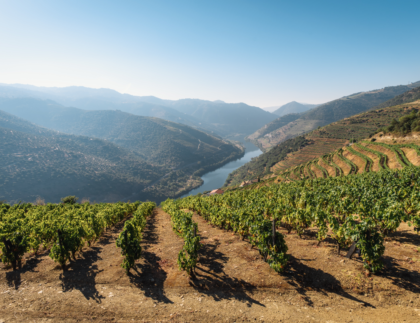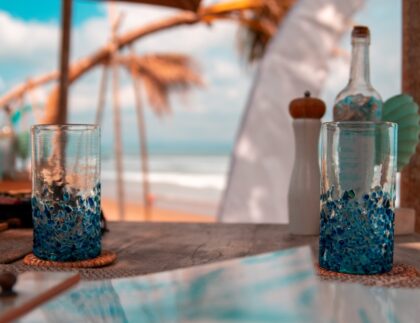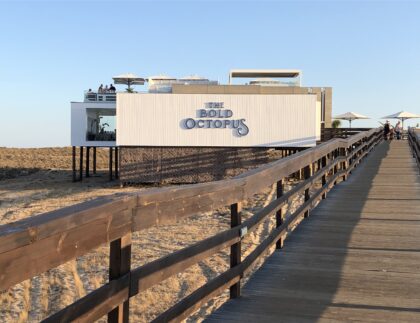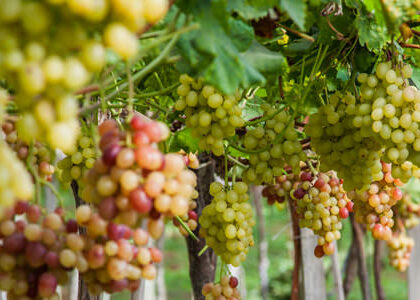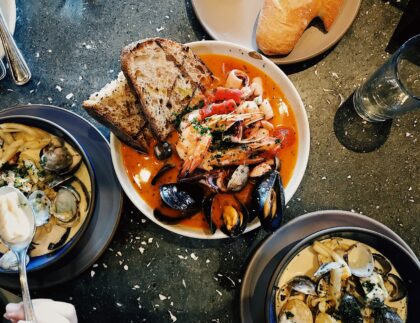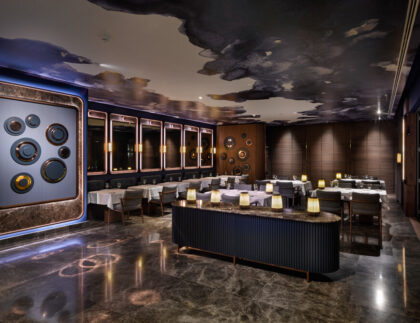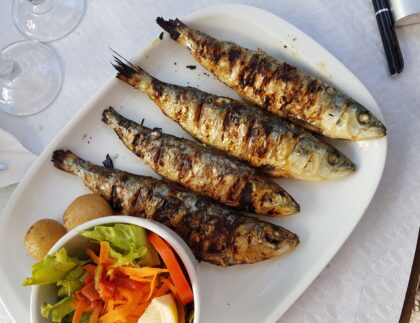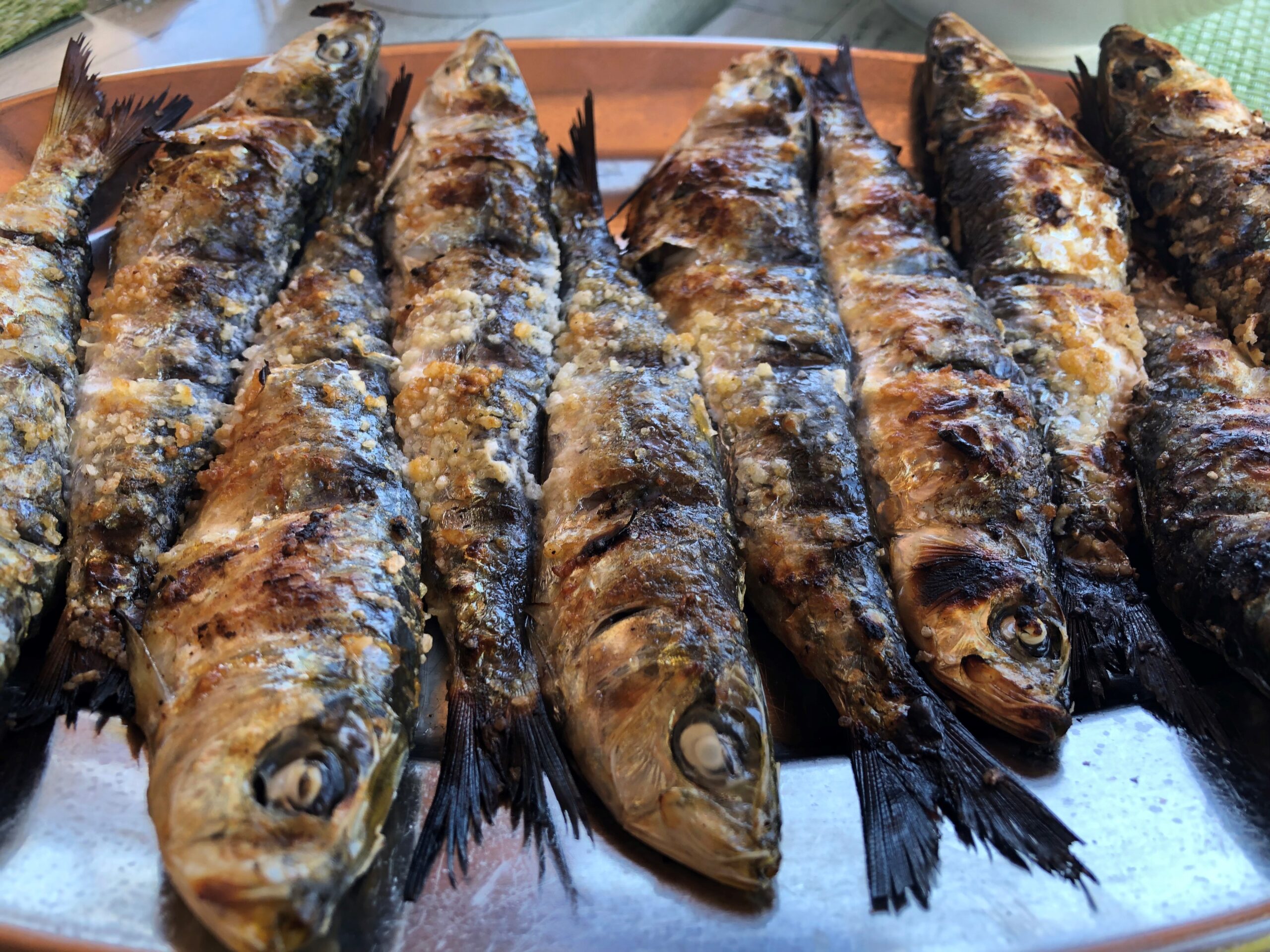
Find your way through your 'Pesces Purchase'.
The sheer variety of different types of Portuguese fish can be overwhelming, and the fact that all of the names are in Portuguese doesn’t make things easier either. Ordering fish in Portugal, whether it’s in a restaurant or at a market, can sometimes be intimidating. We have created this guide to help you find your way through your ‘pesces purchase’ whilst staying at your luxury holiday Villa near Olhos de Agua, and much needed when you are ordering fish in restaurants and at the market.
You will find a list of all the different types of fish that you’ll find in Portugal, with suggestions on what they might taste like and different ways they might be cooked. It’ll also be of help if you want to buy fish at a market in Portugal - Tip, make sure you are buying where prices are displayed.
(Another Tip: to cook most fish at home, all you have to do is season it with salt and olive oil and bake it in the oven or cook it on the plancha).
Oodles and oodles of Olive Oil
Olive oil isn’t just something you’ll use for cooking at home, you’ll also use it when you’re eating grilled fish on the BBQ or in a restaurant and it’s just one of the ways that peixe grelhado (grilled fish) gets its flavour. Unlike other cuisines, the fish isn’t really marinaded or seasoned before being cooked. This is because the Portuguese like to be able to taste the fish itself rather than any type of seasoning, and they also want to be able to taste the flavour the grill gives it. They also like to season it with olive oil.. and plenty of it.
Look around at other people in the restaurant who have ordered fish. Most will reach for the olive oil (most tables will have a bottle of olive oil and vinegar) and they will douse their fish and potatoes in it. It’s not the lowest calorie way to eat fish, but it’s definitely very tasty.
Fun fact: Did you know that Portugal eats more fish per person than Japan, according to studies? Only a few countries like Iceland eat more!
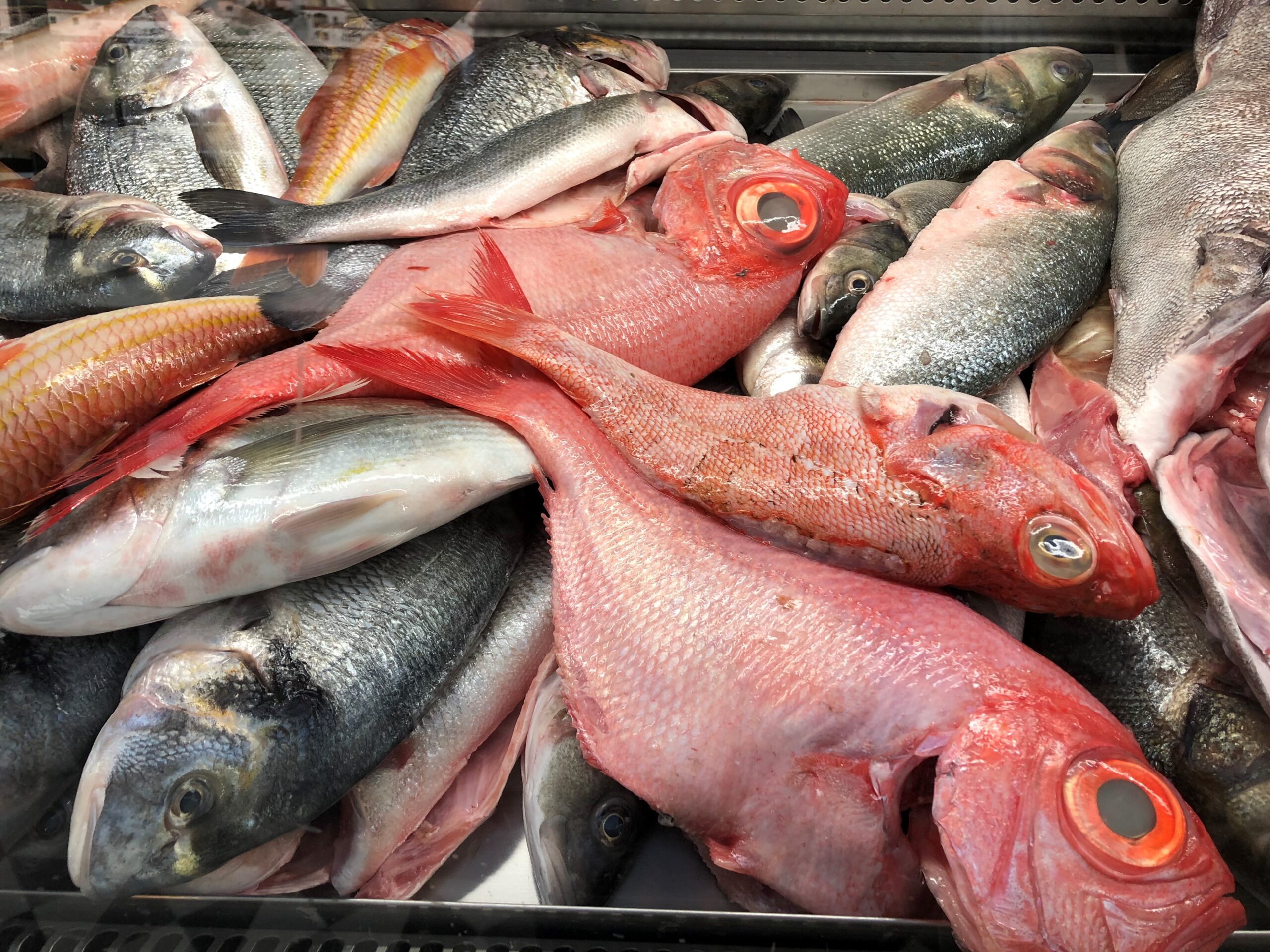
Fish that you’re likely to find on a Portuguese menu
The following are some of the different fish you’ll see on the menu.
Robalo - Seabass, mild taste, a white fish with tender flesh. Along with dourado (below), Robalo is one of the fish that you’re most likely to find on a Portuguese menu particularly at lunchtime when it’s often one of the options on the lunch menu. It’s usually grilled (grelhado) and served with boiled potatoes and salad.
Dourada - Bream, mild taste, like Robalo, it’s a common feature on menus in Portugal. It may be difficult to taste the difference between robalo and dourado at first, as they’re both white and mild-tasting, but over time you’ll probably come to have a favourite.
Peixe Espada - Black scabbard fish, mild taste. It’s one of the most terrifying-looking fish that you’ll will ever see in the market. This fish is part of Madeira’s traditional regional cuisine. Here, they have quite an unusual recipe: the fish is breaded or battered, then fried, and served with a banana on top. Often, there’s a passionfruit custard sauce as well. It’s quite an unusual recipe, and one that you’ll only really find in Madeira. Outside of Madeira, Peixe espada is usually served grilled with boiled potatoes, vegetables, and salad.
Salmão - Salmon, medium taste. A fish everyone will be familiar with, and may even eat regularly. Most people cook it in the oven or fry it, but it’s worth experiencing it grilled. This adds a new flavour to it that you won’t get when you cook it at home.
Atum - Tuna, strong taste. It’s usually a tuna steak (bife de atum). Again, this is a fish that many people will already be familiar with although a lot of people may only really be used to the flavour of tinned tuna.
Bacalhau - Salt-dried cod, mild taste. Has been preserved by being salt-dried, and it’s Portugal’s national dish. Prior to cooking, the bacalhau is desalinated for 24-72 hours and this removes pretty much all of taste of salt and gives it a slightly chewier texture. Removing all the salt means that the bacalhau itself is fairly mild-tasting, although the specific bacalhau recipe may affect the flavour of the cod. There are more than 365 different ways to cook bacalhau: it can be baked in the oven (bacalhau assado no forno), it can be cooked with potatoes and cream (bacalhau com natas), it can be fried with chopped potatoes and onions (bacalhau frito com cebolada). Most recipes are generally fairly mild (you probably won’t find a bacalhau curry, for example). If they don’t already include lots of olive oil in the recipe, it’s assumed you’ll be adding it once it’s served.

Sardinhas - Sardines, strong taste. The Portuguese loves sardinhas and so do we at Villa Cascata, and, when they’re in season, there’s always a constant whiff of grilled sardines (sardinhas assadas) in the air. To truly experience their love of sardines, it’s worth attending one of the many Portuguese festivals that put sardines at the forefont. Dia de Santo António, which takes place in Lisbon in June, is one of the best places to try grilled sardines. Portimão in the Algarve, meanwhile, has an entire festival dedicated to sardines which have been a big part of the local industry. This usually takes place in August near the waterfront, where restaurants like the ever-popular Dona Barca will cook up thousands of sardines per day for attending locals.
Corvina - Meagre or Croaker, mild taste. Usually translated as either croaker or meagre, but don’t let the name fool you. A corvina is definitely not a meagre fish: it can weigh 45 kilos or more. Although it often features in stews, corvina fish is usually served in steaks and grilled or baked. It’s a very good fish for beginners as there’s really only one big bone in the centre. This is easy to remove so, if you’re not used to eating fish, you won’t spend your entire meal picking out little bones.
Perca - Perch, mild taste. A freshwater fish that you’ll often find at the supermarket fish counters and on menus in Portugal. There are three species of perca that are commonly found worldwide – European, Nile, and Giant. Like corvina, perca only really has one main bone so it’s a very good fish for beginners. It’s normally baked or grilled as postas (steaks), but its texture and shape are both quite versatile so it can be filleted, put on skewers, grilled whole, etc.
Tamboril - Monkfish, mild taste. A fish that you’ll regularly see on menus in Portugal, although it’s more common to see it in a rice stew (arroz de tamboril) than it is to see cooked in the oven (tamboril no forno). Monkfish is a fish that most people will have some familiarity with, and will know that it’s a very mild white and meaty fish.
Garoupa - Grouper, mild taste. Another white fish with few bones, and it’s usually served in chunky postas and baked in the oven. Like many of the other fish previously mentioned, it’s quite a versatile fish. You can chop it up into small pieces and put it in a soup, stew, or a pasta sauce, and it’ll stay together. You can also grill it whole, but it’s most commonly served baked in the oven.
Cherne - Large grouper, mild taste. Cherne is a large garoupa, and you’ll find this on menus in Portugal as well. Because of its chunky meat-life texture, it’s often used in mixed fish soups (caldeirada de peixe) or in rice stew dishes (arroz de cherne) and cataplanas (cataplana de cherne), but also baked in the oven with olive oil.
Pargo - Sea Bream, mild taste. A small to medium-sized sea bream, similar in shape to Dourada. It’s normally grilled but it could also be baked in the oven, either whole with the skin on or in fillets. You may also spot pargo assado em crosta de sal on the menu. This is quite a unique way of cooking fish, where the completely covered and baked in a bed of salt. Pargo isn’t the only fish that’s cooked in this way, but it’s a popular fish for this particular recipe.
Sargo - Sea Bream, mild taste. Not only sounds a lot like pargo: they’re both sea breams, similar in shape to Dourada. This means that sargo is often grilled, but it could also be baked in the oven. Restaurants, particularly more traditional Portuguese restaurants, tend to grill fish a lot more than cook it in the oven, while people tend to bake it in the oven at home.
Besugo Bream, mild taste. Another type of sea bream that’s commonly found on menus in Portugal and at the fish market stalls. It’s quite a small fish, with delicate flesh and, like the other types of bream, it’s normally grilled and served with boiled potatoes, vegetables, salad.
Carapau - Mackerel, medium taste. Is often translated as horse mackerel, but it’s easier to think of them simply as a small mackerel. They vary in size, but are usually either sardine-size or even larger. Carapau are usually grilled or fried whole, but you can also buy them filleted which allows you to use them in a lot of other types of recipes.
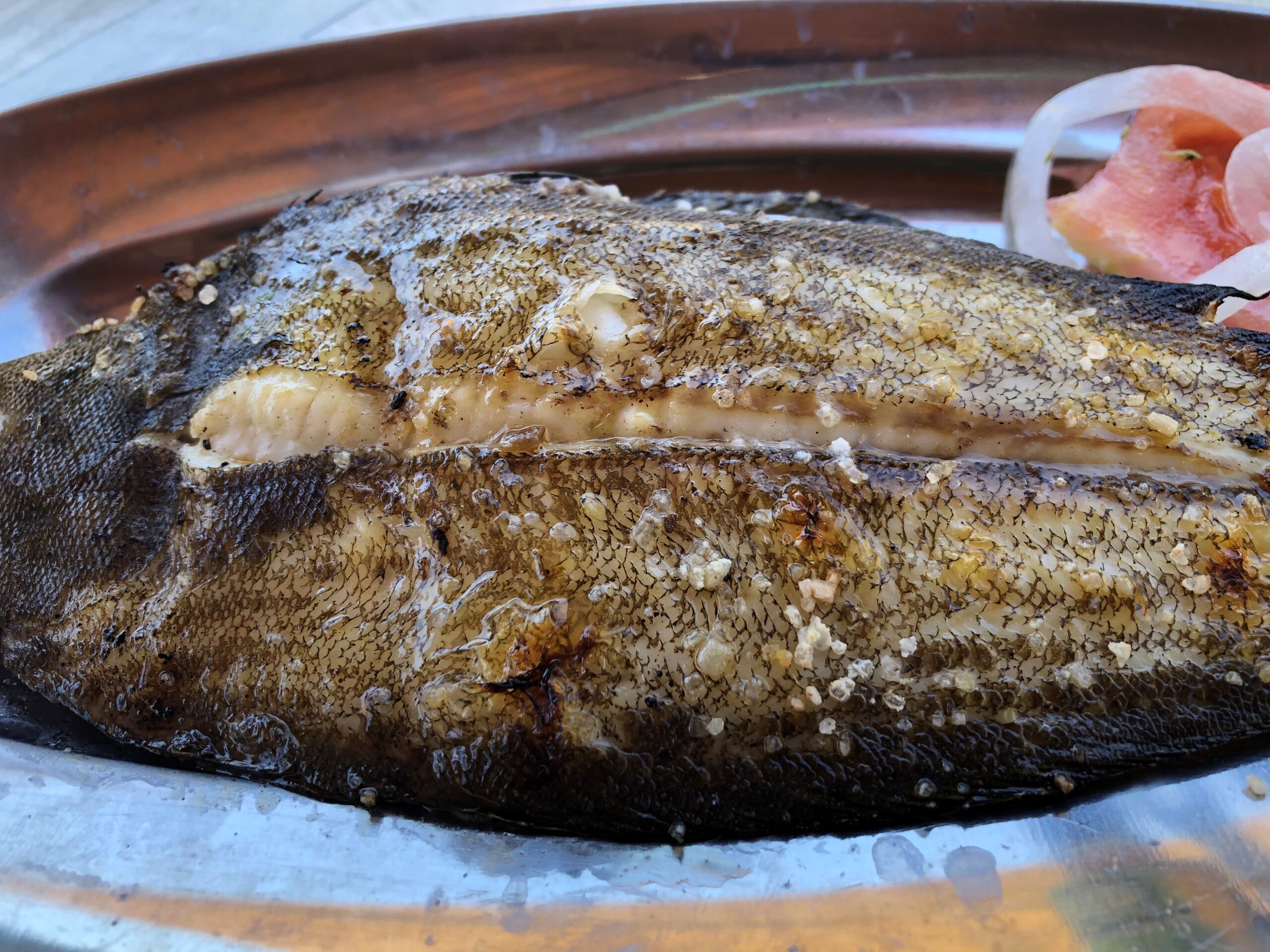
Linguado - Sole, tastes mild. Linguado is a dish you may have had before, probably grilled or baked and served with butter. In Portugal linguado is often served grilled (and often with butter), but it’s often fried as well.
Salmonete - Red Mullet, strong taste. Is a small reddish fish that you’ll normally only find in winter. It’s quite a strong-flavoured taste, and may not be to everyone’s taste. Salmonete is often fried, but it’s also common to cook it in the oven as well.
Pregado - Turbot, mild taste. Pregado is a flat and quite unusual-looking fish and, when you visit the fish market, it really stands out among all of the bream and other similar-looking fish. It’s normally baked in the oven, but you can also grill or boil it. Although pregado has bones, they’re quite big and it’s pretty easy to separate the flesh from the bones.
Espadarte - Swordfish, mild taste. Is another meaty fish with few bones that’s good for beginners. It’s normally grilled or cooked in the oven, but you may also come across espadarte fumado as a starter.
Pescada - Hake, medium taste. Is a white fish, and usually one of the cheaper fishes in the supermarket. It’s often served in postas, which means it’s sliced leaving the bone in the centre, but it may also be filleted. Pescada is usually baked in the oven, and is often used in soups and stews.
Lampreia - Lamprey, medium to strong meaty taste. Lampreia is something that you probably won’t come across unless you visit Portugal, and in particular Northern Portugal, during lamprey season which is usually between January and April. The lamprey is an incredibly weird eel or snake-looking creature that feeds off the blood of other creatures. For some people lamprey is a parasite, but in Portugal it’s considered a delicacy. During lamprey season, lampreys are caught, killed, and then cooked in their own blood along with rice. It’s a very rich dish, and probably not for everyone, but worth trying if you’re interested in experiencing some of Portugal’s weirder dishes.
Fish dishes that you’ll see on a menu
In Portugal, fish is usually grilled (grelhado), and served with boiled potatoes, vegetables, and salad. That way you get to taste the fish, the grill, and the olive oil, rather than any marinade or seasoning.
Some dishes, like cataplanas, aren’t grilled though, and it’s worth trying a few of these types of dishes if you get a chance. Along with cataplanas, the following are just a few different non-grilled fish dishes that you can expect to find on a Portuguese menu. Arroz de Tamboril/Peixe A type of liquidy rice stew that’s usually made up of several types of fish (arroz de peixe) or one type like arroz de tamboril. You’ll also find ‘arroz de’ fishes made from seafood (arroz de marisco).
For all you can eat fish visit Aroma Di Mare at Olhos de Agua or venture a little further and visit Evaristo for a romantic fish supper at sunset - wow! And thank you to our dear friend Bruno for sharing this delight with us!


